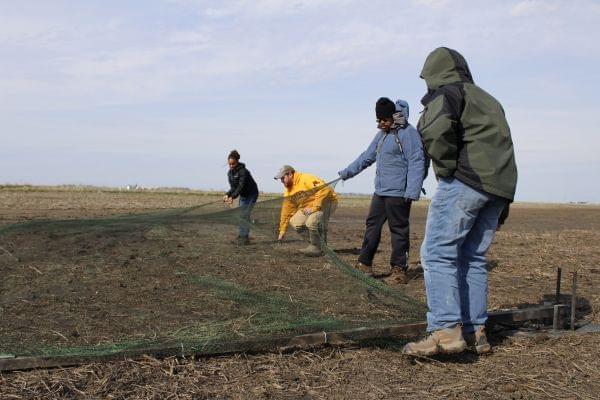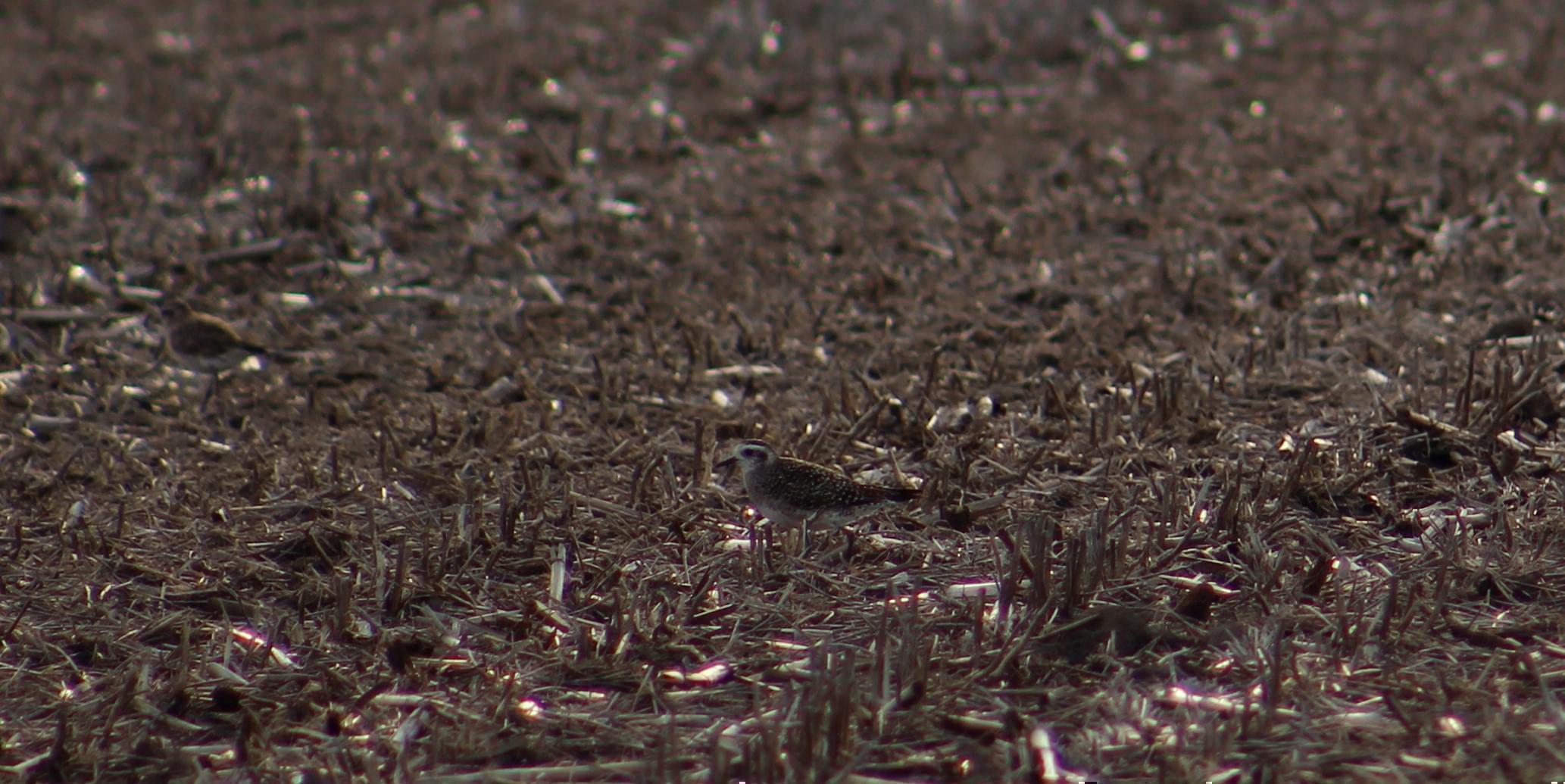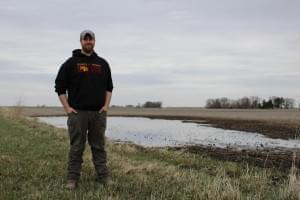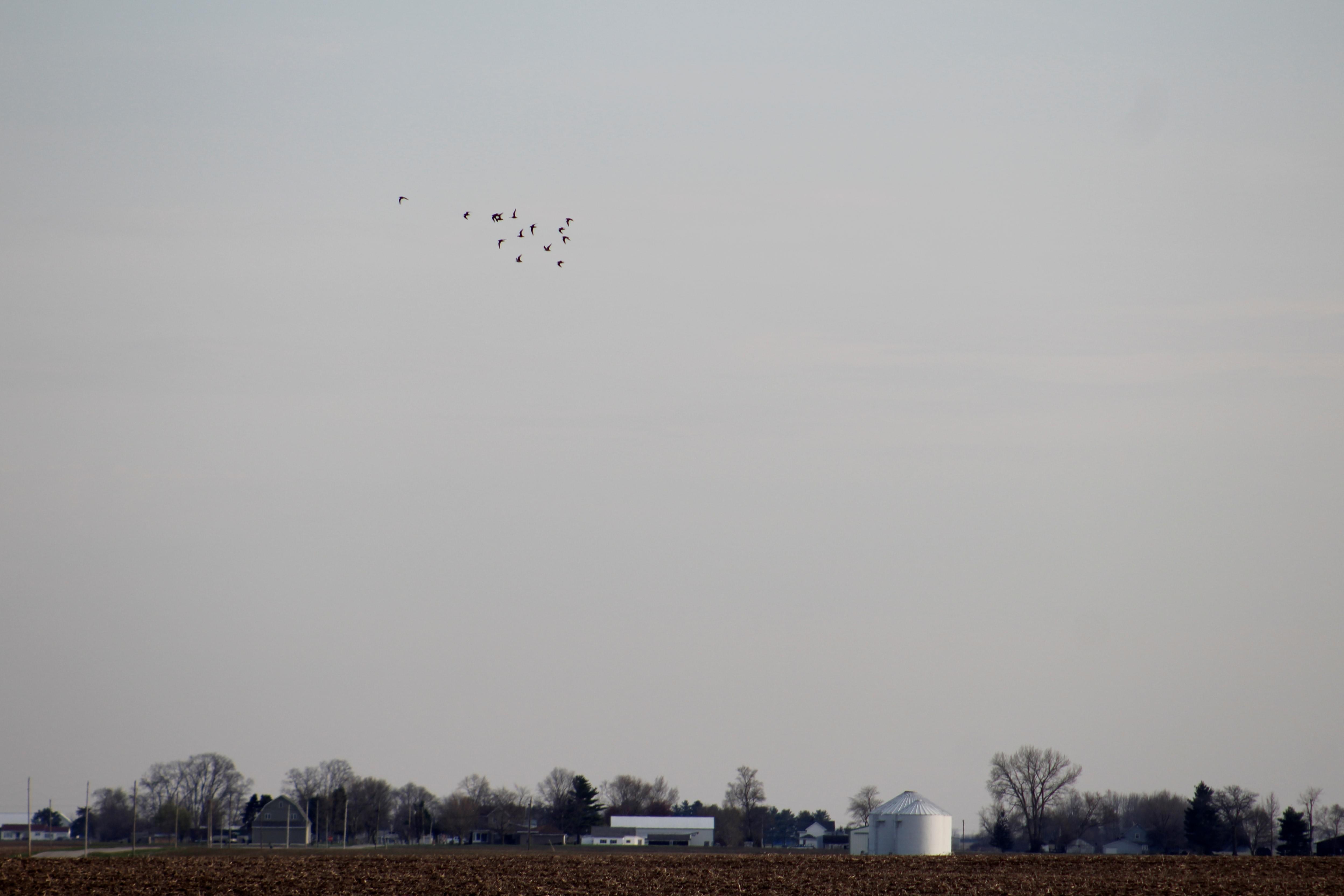One Way To Make Flyover Country More Welcoming To Migrating Birds

Researchers set a net to catch American golden plovers in eastern Illinois. Ben Williams (in yellow) is leading the effort to catch, tag and track the bird before it migrates north to breed. Madelyn Beck/Harvest Public Media
As grassland and prairies gave way to farmland in the Midwest, habitats for some native birds disappeared. There’s a relatively new program in central Illinois looking to restore wetlands for migrating birds and help farmers at the same time.
The program to help them is limited but is secure for now. However, the future for both the bird and the program could be on shakier ground in just a few years.
Bruce Thompson farms about 450 acres of corn and soybeans in eastern Illinois, about 40 minutes from Champaign. He calls a section of his property “the woods” where deer hang out. And, he said, “of course, we’re all for birds. My wife is a bird watcher.”
One of those birds, the American golden plover, has a yearly rest stop in this part of Illinois. The bird isn’t endangered, but there are only about 200,000 or so left, enough for it to be of “conservation concern.”
Madelyn Beck/Harvest Public MediaThe plovers hang out in pools of water that linger in farm fields. But those pools aren’t great for corn and soybean farming, and every penny counts as farmers’ profit margins grow tight. Thompson wanted to put in field tiling, an underground system that siphons water off of fields and makes the ground easier to work in with big machinery. That meant less bird habitat, though, and tiling systems have been blamed for flushing more nitrogen into nearby waterways, causing harmful algal blooms and dead zones in the Gulf of Mexico.
That’s where the Shorebird Conservation Acreage via Drainage Runoff Control Program, or SCARC, comes in. It pays farmers up to $5,000 to flood sections of their property, as well as helps pay for and install water-control structures to gate off those tiling systems from February to mid-April so that birds like plovers can rest along their migratory path.
Generally, once the plovers move along north, it’s getting close to planting season. So, farmers raise the floodgates on those structures and dry out their property, usually within a week.
Thompson joined SCARC about three years ago.
“Glad that I could participate, and everything has been great,” he said.

The migratory path of the American golden plover, seen here in a field north of Hume, Illinois, stretches from Argentina to the Arctic Circle. With only about 200,000 of the birds left, plovers are of conservation concern.
Principally plovers
Golden plovers make one of the bird world’s longest migrations, flying from Argentina up to the Arctic Circle. And while many species — from ducks to killdeer — can benefit from field pools, the plover is of particular interest because most of its population moves through central Illinois during spring migration.

Ben Williams is an agriculture habitat specialist with the Illinois Natural History Survey, Prairie Research Institute and the University of Illinois. He's pictured next to prime Amreican golden plover habitat.
Ben Williams is an agriculture habitat specialist with the Illinois Natural History Survey, Prairie Research Institute and the University of Illinois.
The pools can offer up easy food like worms, which may play a big role in the bird’s survival. If they don’t eat enough, he said, “they might not breed very well. Or they’ll have a failed nest. And then you start to see population numbers dip.”
Researchers don’t know how many plovers used to fly through Illinois, but there is some anecdotal evidence that flocks used to be larger.
“I mean, if you talk to some people in some of the areas that we’ve been working, they’ll regale you with stories of a black cloud (of plovers) behind their tractor,” said Kirk Stodola, an associate ornithologist with the Illinois Natural History Survey. “But it’s hard to put that into actual quantitative metrics.”
Stodola has been working with American golden plovers since 2012, and said researchers are still trying to figure out specifics of the bird’s behavior — things like what it does when it stops over in the Midwest and how long individual birds stick around.

Kirk Stodola is an associate ornithologist with the Illinois Natural History Survey. He's been studying American golden plovers since 2012.
All of this, from paying farmers to flood their fields to studying plovers, takes money.
The funding formula
The SCARC program is a group effort, with funding shared by the Illinois Department of Natural Resources, the Natural Resources Conservation Service, the University of Illinois and the National Audubon Society.
Some of the state DNR funds come from a lawsuit settlement regarding environmental contamination in eastern Illinois. Ande federal NRCS funds come through the Regional Conservation Partnership Program.
Even with so many stakeholders, the SCARC program can’t pay all the farmers who want to participate. There’s only 17 participants this year, according to Stodola, and they created more than 100 acres of temporary wetlands in strategic areas.
Studola is confident the program will go on for several more years, but there’s only two years more of secure funding at the current level.
Regardless, he said this sort of conservation is inherently good. Sure, the birds may eat pests that could harm the farmers later in the season. But at the heart of it, he said, “there’s so many uncertainties that you start to remove species or not care about what’s out there and that can lead to many unforeseen consequences.”
Follow Madelyn on Twitter: @MadelynBeck8

A flock of American golden plovers fly over a field in eastern Illinois. They usually migrate north in flocks like this one, grouping up in the evenings in larger formations.

